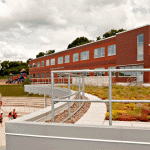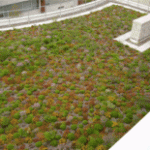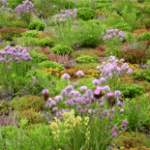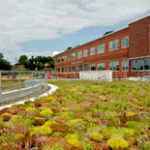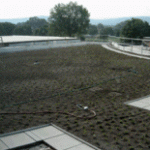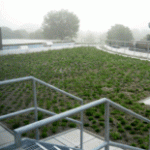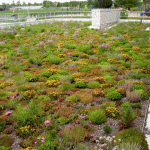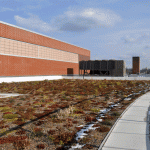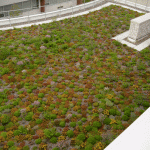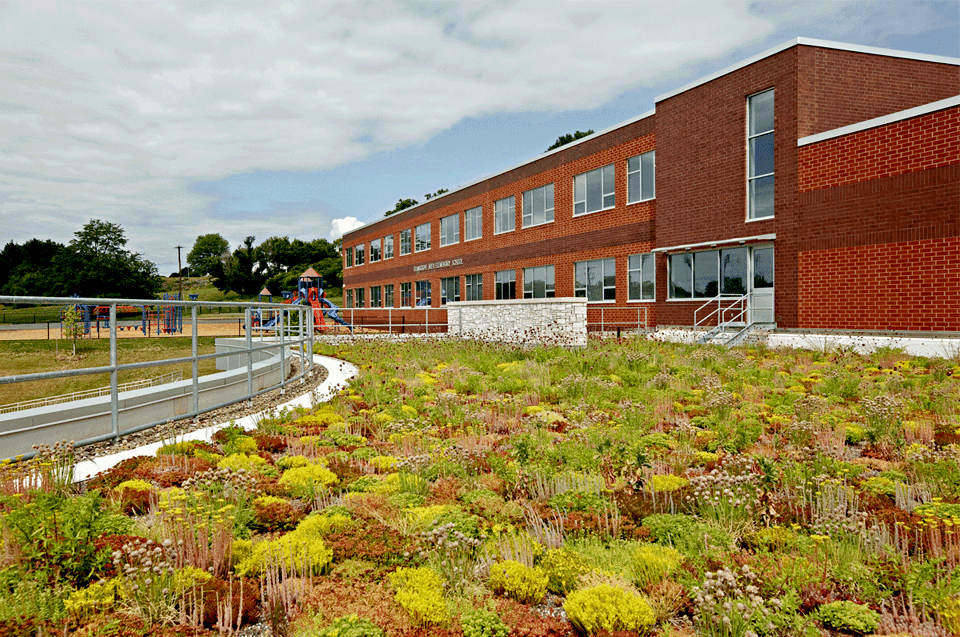
Additional Resources
The Selinsgrove Area Elementary School is located at 600 North Broad St., Selinsgrove, PA 17870; 570.372.2285. Lorinda Krause is the Principal, and visit the Selinsgrove Area School District website here. See the project profile on the architect, EI Associates, website here. Read about Robert D. Berghage here and visit the following websites to learn more: Penn State Center for Green Roof Research and Penn State Department of Horticulture. Read about rooflite in The Greenroof Directory.
The Selinsgrove Area School District commissioned a District Wide Feasibility Study of school facilities in 2006. As a result of the study, EI Associates recommended the consolidation of two schools, placing all Kindergarten through Second Grade Students into one facility on a 12.2 acre site, which had not been renovated since being constructed in 1962. The elementary school is LEED Gold certified and is 89,720 square feet consisting of 49,640 square feet of new construction and 40,080 square feet of alterations to the existing building.
The project goals were to construct a building that consumes less energy, electricity, and water than the existing building, by using energy efficient products, appliances and equipment. Improvements to the existing stormwater management were enhanced with the use of a vegetative roof, rain gardens/bio-retention, and underground detention/infiltration recharge chambers. The project also sought to maximize open space on the site, and minimize parking capacity. To promote water efficiency this project uses water efficient fixtures, dual-flush toilets, waterless urinals, and an innovative kitchen design which will reduce water consumption by 46% compared to a conventional building based on ASHREA standards.
Finally, the classroom wing of the new addition is oriented on an east/west axis for maximum daylighting opportunities. The building as a whole was designed and renovated to allow for occupied spaces to have natural daylight and views. The overarching benefit has been to construct a building that eliminates, as much as possible; any negative impacts on the environment as well as improving the educational opportunities for the students of the Selinsgrove Area School District.
Completed in July, 2009, the vegetative roof?s area totals approximately 3,500 sf and serves to roof the connection between the existing school and the new classroom wing addition. While serving as a visual teaching tool for the students of the building via an adjacent observation window as well as being viewable from the adjacent student playground, the vegetative roof also contributes to correcting pre-construction storm water management issues on the site.
The Project Team, working with Robert D. Berghage, a Penn State University?s Department of Horticulture faculty member, provided a schematic of the Selinsgrove Elementary vegetative roof to a class of his Horticulture students to be utilized in a design project. Incorporating some of the projects from this class, the Design Team then developed a planting list, planting plan and specifications with the intention of providing plant varieties which would excel in this region of Pennsylvania while providing visual interest and color throughout the year. With the competitive public bidding of the project in mind, the planting list was divided into four segments with specifications determining the number of species and ratio of planting from each segment required by the successful bidder.
The result of this process is a vegetative roof with the following species: Sedum Spurium, Sedum sexangulare, Sedum kamtschaticum, Sedum album, Sedum reflexum, Talinum calycinum, Allium schoenoprasum, Dianthus carthusianorum, Sedum emaginatum, Aster oblongifolius, and several other varieties. These varieties are placed in 4 to 6 inches of ?rooflite extensive mc? growing medium, depending on species, which is supported by appropriate drainage mats and root barriers, with the whole system placed upon a light weight insulating concrete and metal roof deck. The finished roof has access directly from the adjacent observation area and utilizes a perimeter of walkway pavers to allow for direct observation and maintenance.
 Greenroofs.comConnecting the Planet + Living Architecture
Greenroofs.comConnecting the Planet + Living Architecture
